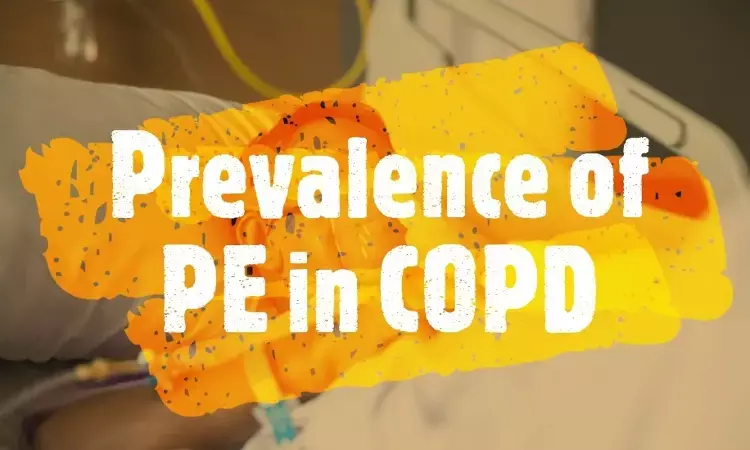- Home
- Medical news & Guidelines
- Anesthesiology
- Cardiology and CTVS
- Critical Care
- Dentistry
- Dermatology
- Diabetes and Endocrinology
- ENT
- Gastroenterology
- Medicine
- Nephrology
- Neurology
- Obstretics-Gynaecology
- Oncology
- Ophthalmology
- Orthopaedics
- Pediatrics-Neonatology
- Psychiatry
- Pulmonology
- Radiology
- Surgery
- Urology
- Laboratory Medicine
- Diet
- Nursing
- Paramedical
- Physiotherapy
- Health news
- Fact Check
- Bone Health Fact Check
- Brain Health Fact Check
- Cancer Related Fact Check
- Child Care Fact Check
- Dental and oral health fact check
- Diabetes and metabolic health fact check
- Diet and Nutrition Fact Check
- Eye and ENT Care Fact Check
- Fitness fact check
- Gut health fact check
- Heart health fact check
- Kidney health fact check
- Medical education fact check
- Men's health fact check
- Respiratory fact check
- Skin and hair care fact check
- Vaccine and Immunization fact check
- Women's health fact check
- AYUSH
- State News
- Andaman and Nicobar Islands
- Andhra Pradesh
- Arunachal Pradesh
- Assam
- Bihar
- Chandigarh
- Chattisgarh
- Dadra and Nagar Haveli
- Daman and Diu
- Delhi
- Goa
- Gujarat
- Haryana
- Himachal Pradesh
- Jammu & Kashmir
- Jharkhand
- Karnataka
- Kerala
- Ladakh
- Lakshadweep
- Madhya Pradesh
- Maharashtra
- Manipur
- Meghalaya
- Mizoram
- Nagaland
- Odisha
- Puducherry
- Punjab
- Rajasthan
- Sikkim
- Tamil Nadu
- Telangana
- Tripura
- Uttar Pradesh
- Uttrakhand
- West Bengal
- Medical Education
- Industry
Worsening symptoms in COPD may be due to concomitant PE finds JAMA study

The symptoms of Pulmonary Embolism (PE) and Chronic Obstructive Pulmonary Disease (COPD) overlap considerably, and the investigation of PE is often ignored or delayed in these patients. A recent study suggests around 6% of patients with COPD admitted for worsening respiratory symptoms could have a pulmonary embolism (PE). The study findings were published in the JAMA on January 5, 2020.
COPD results in a substantial and increasing burden in terms of prevalence, incidence and mortality, and is predicted to be the third leading cause of global mortality by 2030 (WHO, 2013). Patients with COPD are at risk of developing PE due to various reasons, such as immobility, systemic inflammation, and polycythemia. Besides, COPD has been recently defined as an independent risk factor for PE. However, the prevalence of PE with COPD and acutely worsening respiratory symptoms remains uncertain. Therefore, researchers of France conducted a study to determine the prevalence of pulmonary embolism in patients with COPD admitted to the hospital for acutely worsening respiratory symptoms.
It was a multicentric, cross-sectional, prevalence study with prospective follow-up for 3 months in 7 French hospitals. A total of 740 COPD patients admitted to French hospitals were assessed for PE probability using the revised Geneva score within 48 hours of admission. Those with Geneva scores of 11 or above had a high PE probability. So, they were diagnosed with spiral computed tomographic pulmonary angiography and leg ultrasound. Patients with lower Geneva scores underwent D-dimer testing and those with levels at 500 ng/mL or above proceeded to further testing. The major outcome assessed was pulmonary embolism diagnosed within 48 hours of admission. They also assessed pulmonary embolism during a 3-month follow-up among patients deemed not to have venous thromboembolism at admission and who did not receive anticoagulant treatment as a secondary outcome. Other outcomes were venous thromboembolism (pulmonary embolism and/or deep vein thrombosis) at admission and during follow-up, and 3-month mortality, whether venous thromboembolism was clinically suspected or not.
Key findings of the study were:
• Among 740 patients, researchers noted 44 patients were confirmed with PE within 48 hours of admission.
• They also noted that among 670 patients in whom venous thromboembolism was ruled out during the initial admission and who did not receive anticoagulants during 3 months' follow-up, five developed PE including 3 deaths related to PE.
• They reported that the overall 3-month mortality rate was 6.8% (50 of 740).
• They found that the proportion of patients who died during follow-up was higher among those with venous thromboembolism at admission (14 [25.9%] of 54 patients) than the proportion of those without it at admission (36 [5.2%] of 686).
• They also found the prevalence of venous thromboembolism was 11.7% among patients in whom pulmonary embolism was suspected (n = 299) and was 4.3% among those in whom pulmonary embolism was not suspected (n = 441).
The authors concluded, "Among patients with chronic obstructive pulmonary disease admitted to the hospital with an acute worsening of respiratory symptoms, pulmonary embolism was detected in 5.9% of patients using a predefined diagnostic algorithm. Further research is needed to understand the possible role of systematic screening for pulmonary embolism in this patient population".
For further information:
https://jamanetwork.com/journals/jama/article-abstract/2774681
Medical Dialogues Bureau consists of a team of passionate medical/scientific writers, led by doctors and healthcare researchers. Our team efforts to bring you updated and timely news about the important happenings of the medical and healthcare sector. Our editorial team can be reached at editorial@medicaldialogues.in.
Dr Kamal Kant Kohli-MBBS, DTCD- a chest specialist with more than 30 years of practice and a flair for writing clinical articles, Dr Kamal Kant Kohli joined Medical Dialogues as a Chief Editor of Medical News. Besides writing articles, as an editor, he proofreads and verifies all the medical content published on Medical Dialogues including those coming from journals, studies,medical conferences,guidelines etc. Email: drkohli@medicaldialogues.in. Contact no. 011-43720751


